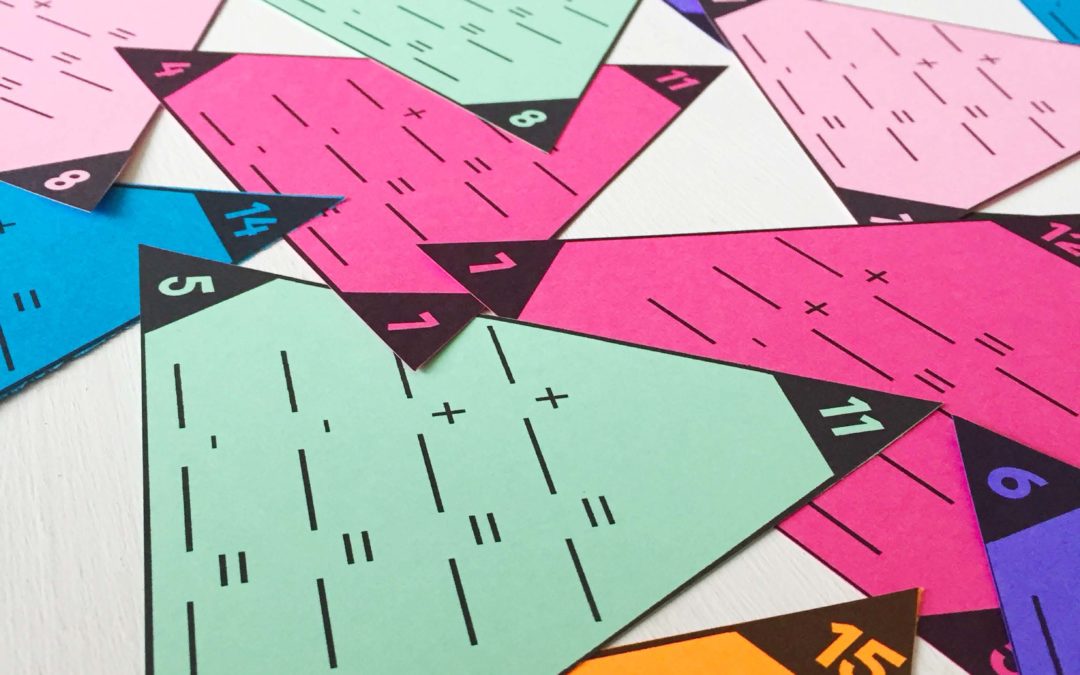The other day I brought my parents and siblings to my classroom to show them around. As they were looking around at the school supplies I had already set up, my dad found my math fact centers. He looked at the task cards and asked, “What are these?” And of course, I was happy to explain! He was pointing at my Make Ten Math Fact Strategies task cards. I said that these task cards help students make mental connections to math facts strategies to help with their math fact fluency. I gave him the example, “If I am adding 7 and 4, I know that 7 + 3 =10, and I need to go one more because I was really adding 4 not 3.” This is just one math fact strategy we teach students to help them easily do math facts in their head and memorize them.
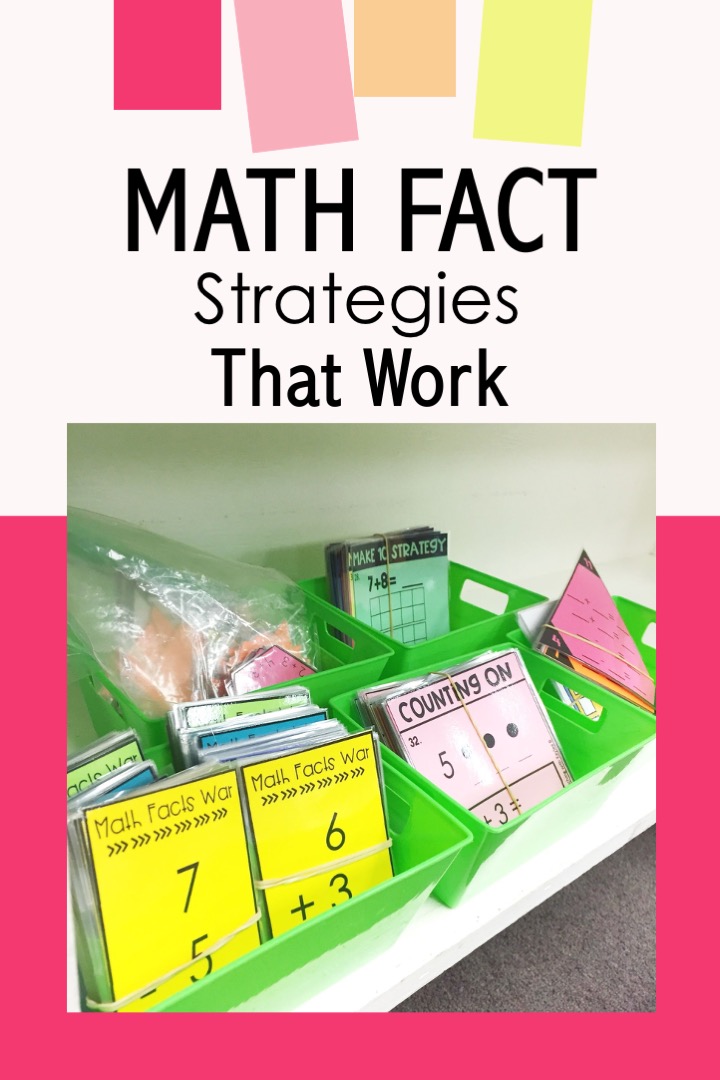
Math fact strategies help students discover the answer to math facts by themselves, making it more likely to commit the facts to memory.
Why is math fact fluency important? First off, they are part of the Common Core State Standards. In first grade, students need to be adding and subtracting within 20 using math fact strategies. In second grade, students need to be fluently adding and subtracting within 20 using mental strategies. This helps later in the year when they are learning the algorithm for addition and subtraction. They don’t have to be caught up on the facts, they can focus on the process. When I have seen students struggle with the algorithm, it is because they are spending so much time trying to figure out the math facts that they get lost in the process. By teaching math fact strategies heavily in the beginning, it will help students in the future. They are a building block in a child’s math journey.
The math fact strategies that help students quickly find the answer are using doubles, counting on, making 10, using a number line, and using fact families. I want to share with you these math fact strategies and how I use them in the classroom. But first, I wanted to let you know that I have a printable one page glance of all the strategies as part of my free workbook for teachers: The 7 Steps to Ensure Math Fact Fluency. Download yours free here.
Also… If you’re a parent who has a child struggling with math, you’ve got to check out Learner. Learner is an online tutoring platform that sets students up for success. To get started take a short quiz about your child’s needs. Then Learner’s Success Management Team reviews that and matches your child with the perfect tutor. Get your $25 trial here.
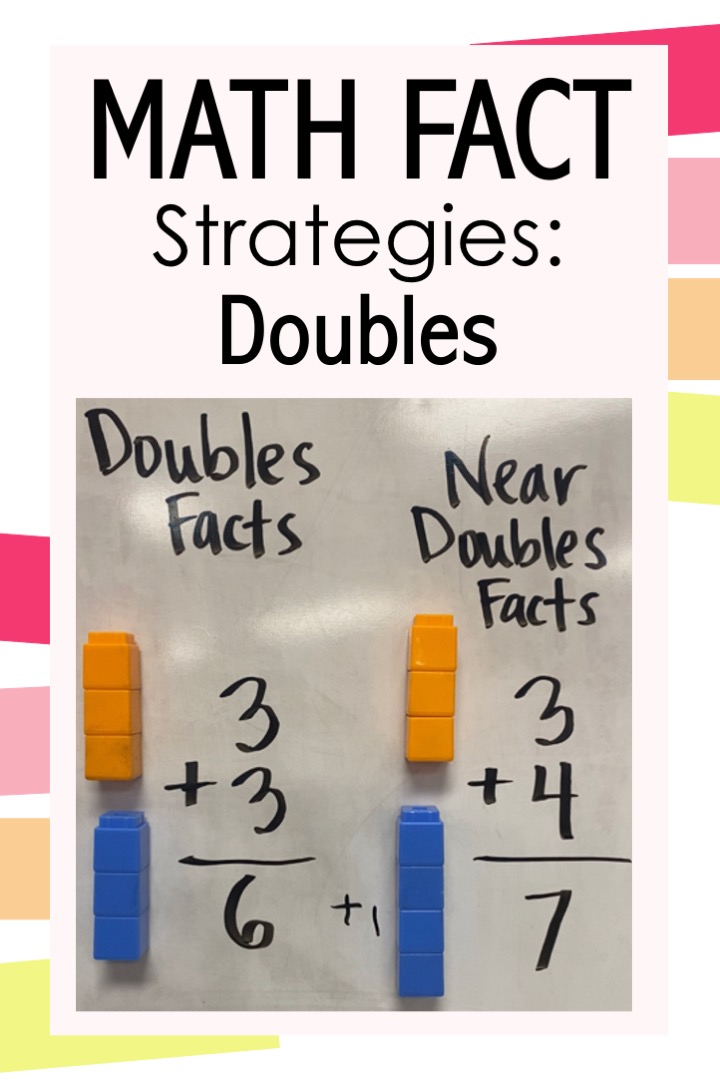
Math fact strategies help students discover the answer to math facts by themselves, making it more likely to commit the facts to memory.
Math Fact Strategies
Doubles and Close to
It is easy for students to remember doubles. They know 5+5=10 and 7+7=14. They can use that knowledge to help them with harder facts. If they know 5+5=10, then they can figure out 5+6=11. Six is one more than five and eleven is one more than ten. Teach students the pattern then let them practice. I let my students practice this math facts strategy with Addition Facts War and Subtraction Facts War card games. I have different versions of the game and one is a doubles and close to version. Students can apply this strategy to help them as they play the game with their classmates. Find doubles facts task cards I use in my classroom here. Get these task cards along with my other math fact strategies task cards in a money saving bundle here.
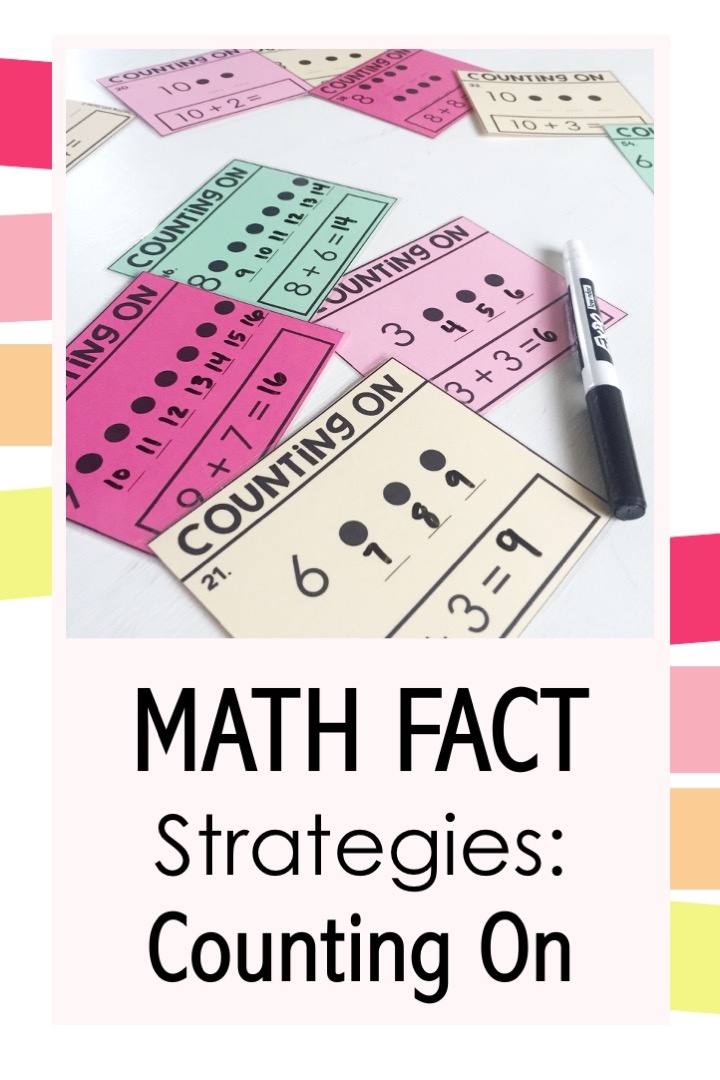
One of the first math fact strategies I teach my 2nd grade students is the counting on strategy.
Counting On
This is one of the first math fact strategies students ever learn! If they are adding 5 and 3 they start at five and count on three more. “5, 6, 7, 8… the answer is 8!” This strategy is perfect for smaller numbers and to get students started on math fact strategies. It also helps them see relationships between math facts. However as they learn different math fact strategies, they will discover that other strategies can be faster. I have my students practice Counting On for addition and Counting Back for subtraction with task cards. This helps give them support to eventually use this math fact strategy mentally. Get these task cards along with my other math fact strategies task cards in a money saving bundle here.
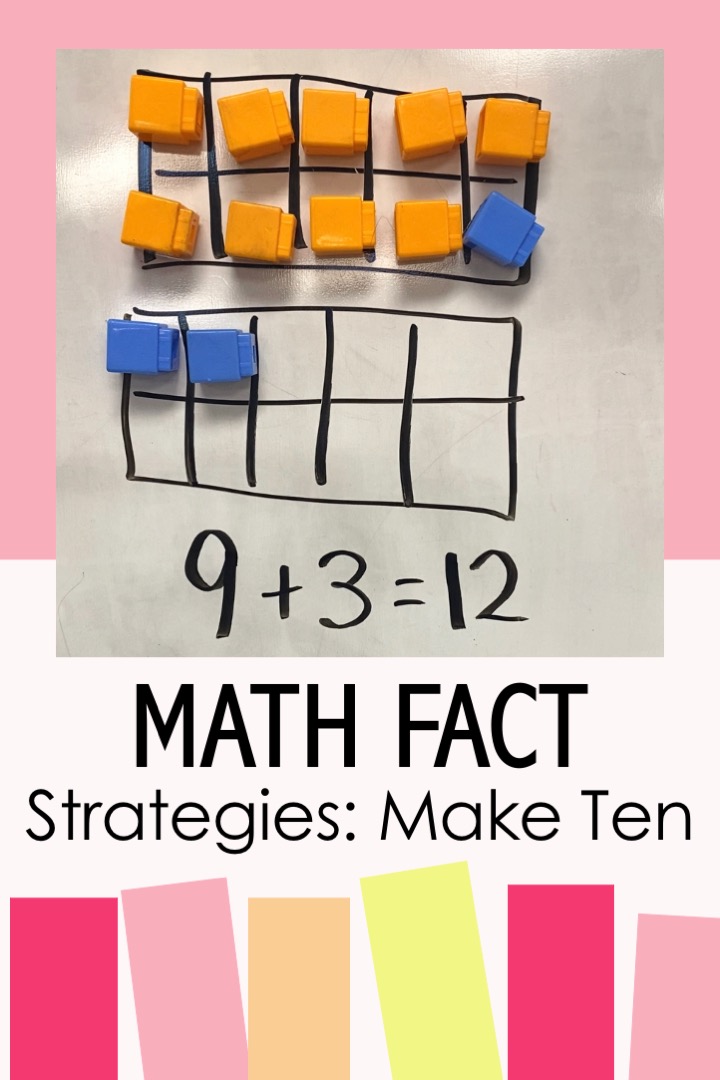
When teaching math fact strategies, I like to start by making things very visual and concrete for my 2nd grade students. That is why I teach the make ten math fact strategy with ten frames and cubes.
Make 10
Once sums get to 11 and above, they are harder for students. Make 10 is a great math facts strategy for these harder facts. To help students make tangible connections to this strategy before doing it mentally, I have them use two ten frames. With one marker color, they fill in one number, then with another color they add the next number. Then they can easily see the sum it makes when looking at the ten frames.
After doing this process, students will make mental connections. They will start doing this math fact strategy in their head. This strategy also works with subtraction! They take away how many they need to get to ten, and then subtract the needed amount more to get to their answer. My students use task cards for both addition and subtraction. Get these task cards along with my other math fact strategies task cards in a money saving bundle here.
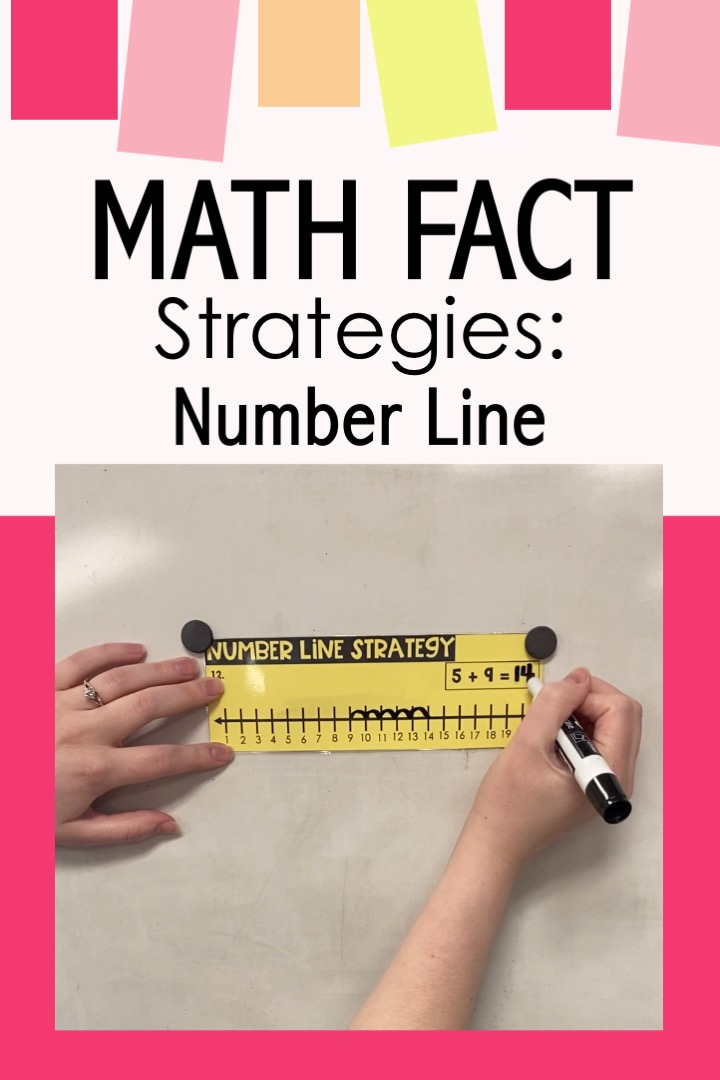
If students struggle with the number sequence then having them use number line math fact strategies is a great choice.
Number Line
Using a number line is a great way for students to see relationships between math facts and find the answer relatively quickly. As they continue to find the answer to facts on a number line, they will make connections to that math fact. With practice, they will commit it to memory. I have students practice this with both addition and subtraction.
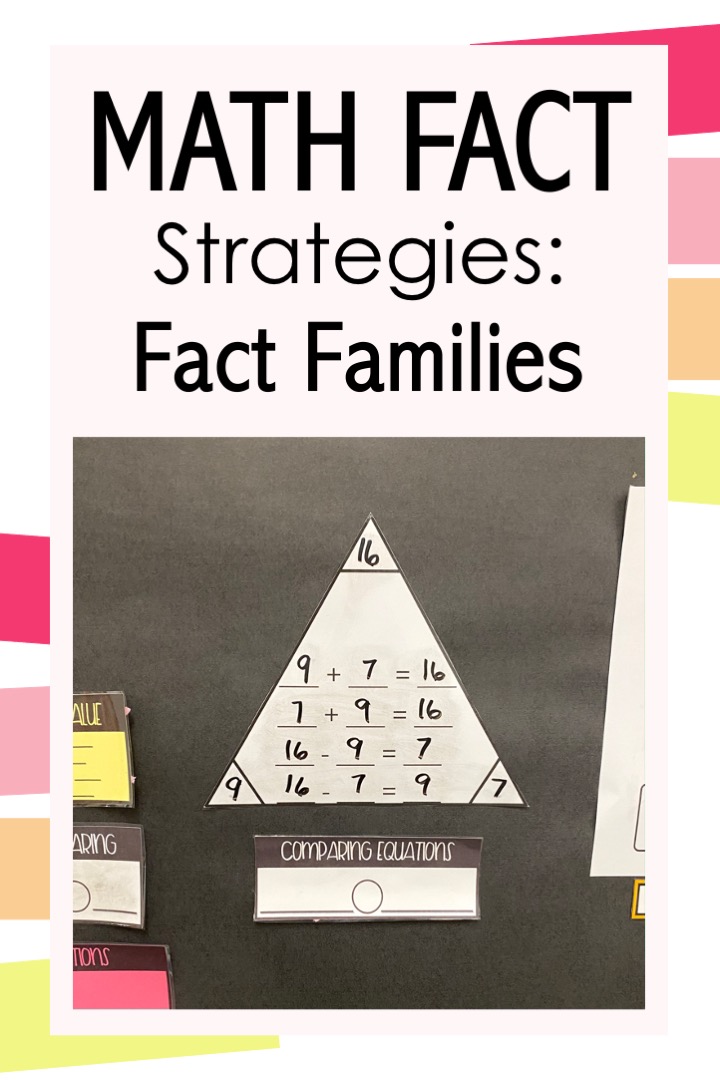
Working with fact families is one of my favorite strategies to improve math fact fluency.
Fact Families
If students know the addition fact, they should know the subtraction fact with those numbers as well. Working with fact families helps students when they move on to subtraction facts. Students need to know the relationship between addition and subtraction, and by using fact families as a math fact strategy, they will be able to use it as a mental strategy. I have students practice this with my Fact Family Triangles. It gives them the numbers, and then they have to come up with the addition and subtraction equations. Get these task cards along with my other math fact strategies task cards in a money saving bundle here. To learn more fact family practice ideas, read this blog post: 3 Reasons Why You Need to Teach Fact Families
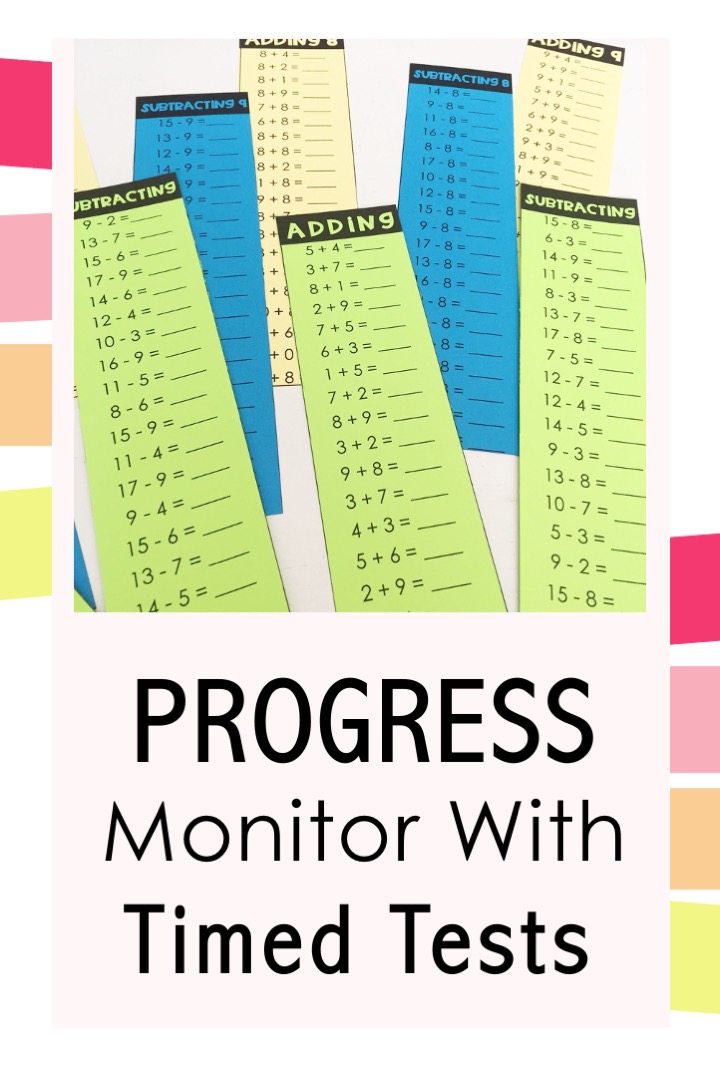
I don’t like to drill my students on timed times, but I do use them to monitor their progress when it comes to learning math fact strategies.
Math Fact Fluency Goals
Committing math facts to memory is a lot of hard work for students. But practicing math fact strategies in a fun way helps them in their math fact journey. I love for students to see their progress as they are working towards goals. I made timed tests for students to take. These are simple for students to use. They grab a test, a dry-erase marker, and flip a timer over. They also have answer keys so they can correct their work.
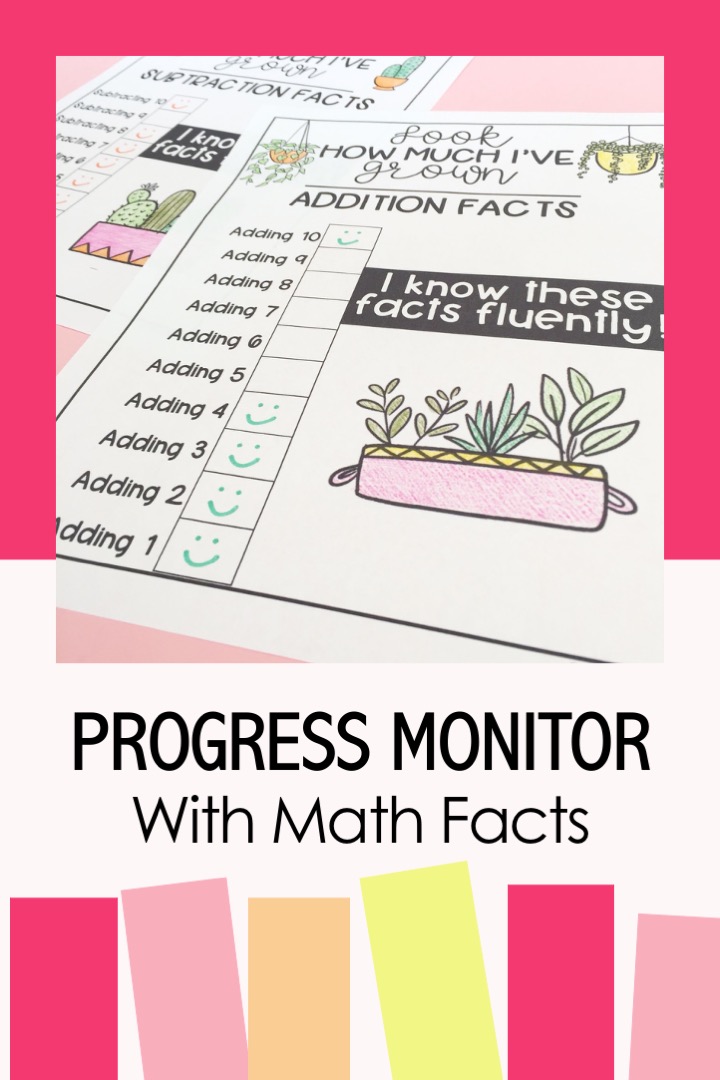
I like to help students celebrate their progress with learning the math fact strategies, so I have them monitor their own progress with math facts.
Once they can show they know that math fact fluently, they get to mark it in their Math Facts Progress Monitor. This is highly motivating for students. They love to see their progress and how much they have grown in their math facts through math fact strategies.
After teaching all the math fact strategies, I like to make anchor chart with my students. This is a great way to review each strategy and it allows students to reference it when they are stuck on a math fact. They can easily pick a strategy they feel comfortable using.
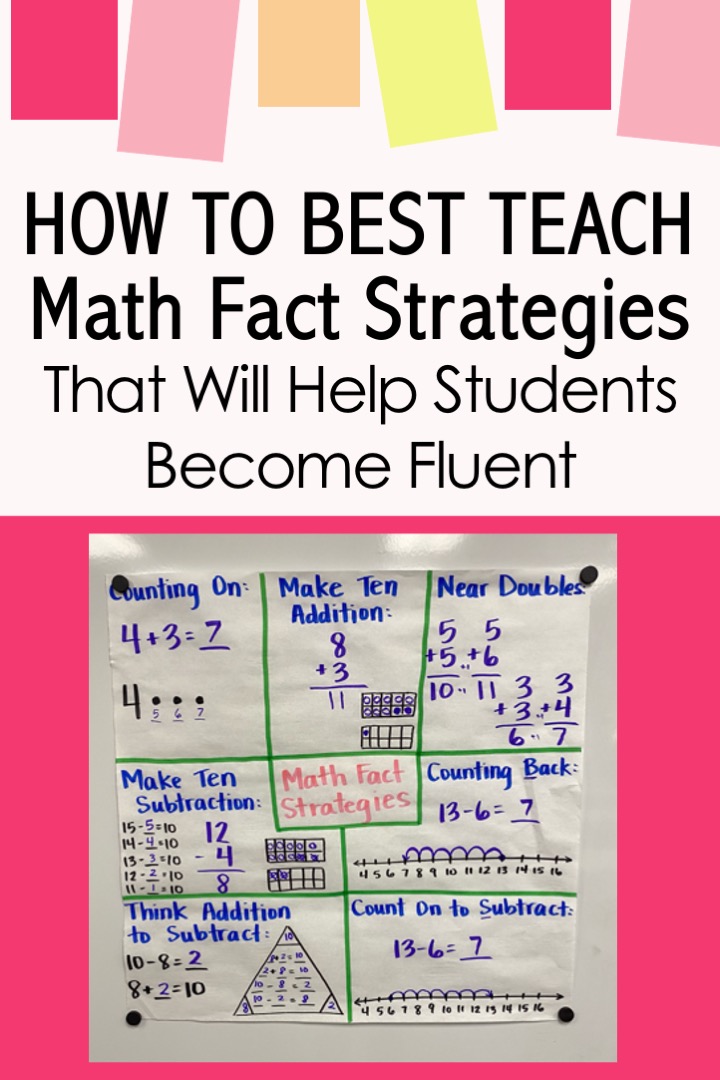
I love having a math fact strategies anchor displayed while my students are learning these. Then they can choose a strategy that will help them when they have forgotten a fact in the moment.
I also have pre-made anchor charts for each strategy as part of my Math Facts Strategy bundle. They can be helpful for you as the teacher to use to teach each strategy. Then you can post them up in your classroom for students to reference to when needed. Find my Math Facts Strategy Bundle here.
Each resource in that bundle also comes with strategy task cards & recording sheets, worksheets, and exit tickets. Find them here.
I like to organize all these task cards in these Amazon photo box craft keeper bins. I can easy pull them out when I want to add them in a lesson. Find these bins here. As an Amazon Associate I earn from qualifying purchases.
Once students learn the strategies, it’s important for them to get fun fact fluency practice. I like to do that in my classroom with math fact games. Check out my list of top math fluency games in this blog post: The Best 9 Games for Practicing Math Facts
Looking for other ways to help improve your math fact instruction? Download my free workbook for teachers: The 7 Steps to Ensure Math Fact Fluency. Get your free copy here.

